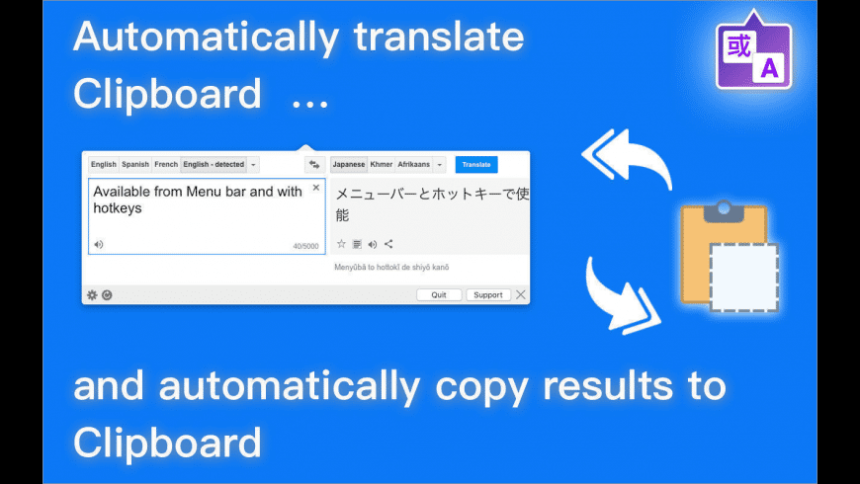The ability to translate Taiwanese to English is becoming increasingly valuable in today’s interconnected world. Taiwan, with its rich culture, history, and growing global presence, has fostered a significant demand for accurate translation between its native languages and English. This article explores the nuances of Taiwanese languages, the challenges of translation, tools available, and tips to achieve accurate results.
Understanding the Taiwanese Languages

Taiwan primarily uses Mandarin Chinese as its official language, but other languages, such as Hokkien (commonly referred to as Taiwanese) and Hakka, are also widely spoken. Each language has its unique linguistic features that can impact translation.
1. Mandarin Chinese in Taiwan
Mandarin in Taiwan follows the traditional Chinese script, differing from the simplified Chinese used in Mainland China. This distinction adds complexity to translations, as traditional characters often have more strokes and nuanced meanings.
2. Taiwanese Hokkien
Taiwanese Hokkien is a variant of Southern Min Chinese. Unlike Mandarin, it doesn’t have a standard written form and relies on romanization systems like Pe̍h-ōe-jī or custom orthographies.
3. Hakka
Hakka, another minority language in Taiwan, has distinct phonetics and vocabulary that can further complicate translation into English.
Challenges in Translating Taiwanese to English
Accurate translation from Taiwanese to English requires navigating linguistic, cultural, and contextual challenges. Below are some of the major hurdles:
1. Linguistic Differences
Taiwanese languages differ significantly from English in structure, grammar, and syntax. For example:
- Word order: While English follows a subject-verb-object (SVO) structure, Mandarin often uses a topic-comment structure.
- Idiomatic expressions: Many idioms in Taiwanese languages lack direct English equivalents, requiring creative adaptations.
2. Cultural Nuances
Taiwanese languages are deeply rooted in cultural contexts. Words and phrases often carry meanings influenced by traditions, history, or local customs, which may not translate directly.
3. Polysemy in Traditional Characters
A single traditional character can have multiple meanings depending on its context, making translations ambiguous without adequate context.
4. Informal Usage and Slang
Spoken Taiwanese (Hokkien) and informal written texts often use slang, abbreviations, or borrowed terms that require a deep understanding of contemporary culture.
Tools for Translating Taiwanese to English

Modern technology offers numerous tools to facilitate Taiwanese-to-English translation. However, their effectiveness varies based on the language’s complexity and the nature of the text.
1. Machine Translation Tools
- Google Translate: Supports traditional Chinese but struggles with idiomatic expressions and cultural nuances.
- DeepL: Known for producing contextually accurate translations, particularly for longer texts.
- Microsoft Translator: Offers support for both traditional Chinese and some Taiwanese dialects, with real-time translation features.
2. Taiwan-Specific Resources
- Pleco: A popular app for Chinese learners, featuring a comprehensive traditional Chinese dictionary and Hokkien entries.
- Taiwanese Hokkien Dictionaries: Resources like Maryknoll or 臺灣閩南語常用詞辭典 (Taiwan Minnan Common Words Dictionary) provide insights into Taiwanese vocabulary.
3. Professional Translation Software
- Trados Studio: Allows translators to build translation memories and glossaries specific to Taiwanese and English texts.
- MemoQ: Provides collaborative features and supports traditional Chinese script.
4. Human Translators
For high-stakes translations like legal documents, marketing content, or literature, hiring a professional translator familiar with Taiwanese languages ensures cultural and linguistic accuracy.
Tips for Accurate Taiwanese-to-English Translation

Whether you’re using tools or translating Taiwanese to English manually, the following tips can help improve accuracy:
1. Understand the Context
Translation is not just about words but meaning. Analyze the context, audience, and purpose of the text to select the appropriate tone and vocabulary.
2. Learn Key Linguistic Features
Familiarity with key features of Taiwanese languages, such as tonal differences in Hokkien or character meanings in Mandarin, can significantly aid translation.
3. Use Reliable Resources
Invest in bilingual dictionaries, grammar guides, and specialized glossaries. Resources specific to Taiwan’s culture and history are particularly valuable.
4. Adapt to Cultural Differences
When translating idioms, proverbs, or cultural references, adapt them creatively for English audiences. For example:
- Taiwanese idiom: 「吃飯皇帝大」 (chi̍h-pn̄g hông-tè-tāi)
Literal translation: “Eating is greater than the emperor.”
Adaptation: “Eating takes priority.”
5. Proofread and Edit
Review your translation for clarity, consistency, and grammatical accuracy. Enlist a native speaker of English or Taiwanese for feedback if possible.
Bridging the Cultural Gap Through Translation
Translation is not just about converting words from one language to another; it is about fostering mutual understanding. Taiwanese-to-English translation plays a pivotal role in:
- Cultural exchange: Promoting Taiwan’s rich heritage, from folk tales to modern cinema.
- Business growth: Enabling Taiwanese businesses to expand into English-speaking markets.
- Academic collaboration: Sharing research and ideas across global educational institutions.
Future of Taiwanese-to-English Translation

With advancements in artificial intelligence, the future of Taiwanese-to-English translation looks promising. Emerging trends include:
- AI-powered tools: AI continues to improve contextual understanding and natural-sounding translations.
- Dialect recognition: Efforts are underway to better integrate Taiwanese Hokkien and Hakka into machine translation systems.
- Voice-to-voice translation: Real-time voice translation devices are making multilingual communication more accessible.
Conclusion
Translating Taiwanese to English is a challenging yet rewarding endeavor. By understanding the unique aspects of Taiwanese languages, leveraging modern tools, and applying effective strategies, you can bridge the gap between these two languages. Whether for personal communication, business, or cultural exploration, mastering this skill opens doors to a deeper connection with Taiwan and its global partners.












